Case Studies.
Add Case Study
Our Case Study database tracks 22,657 case studies in the global enterprise technology ecosystem.
Filters allow you to explore case studies quickly and efficiently.
Download Excel
Filters
-
(6,653)
- (2,601)
- (2,127)
- (945)
- View all
-
(5,642)
- (2,469)
- (1,692)
- (826)
- View all
-
(5,571)
- (2,178)
- (1,766)
- (643)
- View all
-
(5,247)
- (2,179)
- (1,715)
- (1,321)
- View all
-
(2,881)
- (1,448)
- (574)
- (376)
- View all
- View all 15 Technologies
- (1,985)
- (1,985)
- (1,915)
- (1,679)
- (1,629)
- View all 42 Industries
- (8,728)
- (4,742)
- (3,618)
- (3,233)
- (2,947)
- View all 13 Functional Areas
- (3,304)
- (2,787)
- (2,603)
- (2,006)
- (1,630)
- View all 129 Use Cases
- (13,581)
- (5,296)
- (4,272)
- (3,520)
- (2,856)
- View all 9 Services
- (504)
- (432)
- (416)
- (382)
- (301)
- View all 1083 Suppliers
Selected Filters

|
LandrumHR's Transformation: Achieving a Single Source of Truth with Bullhorn One
LandrumHR, a full-service Human Capital firm, was struggling with an outdated and inflexible system that was hindering their growth and productivity. The system lacked an open API infrastructure, preventing seamless integration with third-party solutions. This lack of flexibility was stunting innovation and preventing LandrumHR from differentiating themselves in the market. Additionally, the system did not provide visibility into key performance indicators (KPIs), leaving the recruiting and sales teams in the dark about their data and work priorities. This lack of visibility resulted in recruiters spending more time searching for data than interacting with candidates. The system was also not intuitive, making it difficult to train new hires and slowing down the company's growth. Overall, the system required too much manual intervention, slowing down workflows and preventing LandrumHR from achieving a single source of truth for their data.
|
|
|

|
Bullhorn Automation: Aiding Signature Consultants Navigate Pandemic and Boost Redeployment Rate
Signature Consultants, a subsidiary of DISYS and one of the top 10 largest IT staffing companies in the US, was looking to automate its sales processes in 2020. However, the onset of the COVID-19 pandemic forced the company to shift its priorities. The need to quickly and efficiently deploy COVID-related communications became paramount, pushing the automation of sales processes to the backburner. The challenge was to find a solution that could not only automate their sales processes but also adapt to the changing priorities brought about by the pandemic.
|
|
|

|
Strategic Staffing Solutions Enhances Candidate Sourcing with Resume-Library and Bullhorn Integration
Strategic Staffing Solutions (S3), a global staffing firm, was facing a significant challenge in managing its candidate sourcing process. The team was using Resume-Library for sourcing candidates and Bullhorn as its Applicant Tracking System (ATS). However, the lack of integration between the two platforms was causing inefficiencies. The team had to log into Resume-Library daily to search the active resume database, find suitable candidates, download their resumes, and then manually upload them to their Bullhorn account. This process was not only time-consuming but also impractical as it involved navigating back and forth between the two platforms. The challenge was further compounded by the fact that S3 recruits across multiple industries in various locations across the U.S., making the extensive database of Resume-Library crucial for their hiring needs.
|
|
|

|
Increasing Speed and Decreasing Costs: The Jacobson Group's Journey with VMS Sync
The Jacobson Group, a leading provider of talent to the insurance industry, had traditionally preferred working with high-touch, highly-consultative clients, and Vendor Management System (VMS) relationships did not allow for this. Prior to 2019, the company actively avoided VMS-style business and did not seek new opportunities in this area. However, they noticed a shift in the industry, with organizations as small as $5 million in spend outsourcing the management of their contingent labor program or centralizing the procurement of their contingent labor through in-house Managed Service Providers (MSPs). As MSP and VMS solutions began to increase rapidly in their space, The Jacobson Group realized they were missing out on potential revenue.
|
|
|
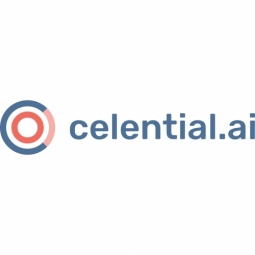
|
Heartbeat Health's Accelerated Talent Acquisition with Celential's AI
Heartbeat Health, a fast-growing HealthTech company, was facing a talent shortage as it sought to accelerate its product research and development. The company's product and engineering teams work closely with medical board-certified cardiologists, making candidates with healthcare domain-focused skills a necessity. However, their Talent Acquisition team lacked the internal capacity to source enough qualified candidates. The company initially turned to recruiting agencies for support, but the candidates presented to them rarely had the qualifications necessary to succeed at Heartbeat. The challenge was to find a solution that could provide a strong candidate pipeline with skill, product domain, and team match, while also reducing the time and cost to hire.
|
|
|

|
AdSocial's Innovative IoT Solution for Swan Valley Visitor Center
AdSocial, a creative social media and digital marketing agency based in Western Australia, was tasked with the challenge of modernizing and digitizing the paper-trail map for a family rally event for the Swan Valley Visitor Center, a popular tourism region. The goal was to create an engaging and interactive experience for tourists, while also collecting their email addresses for future promotions. The challenge was to create a solution that would not only enhance the visitor experience but also provide a platform for the Swan Valley Visitor Center to connect with tourists and promote future events. The solution needed to be innovative, user-friendly, and capable of capturing the interest of a wide range of tourists.
|
|
|

|
Eddy’s Cantina's Success with ManyChat and Walletly: A 3000% Return on Ad Spend
Eddy’s Cantina, a restaurant chain based in Taipei City, Taiwan, was seeking an effective marketing system to convert new diners into long-term customers. The owner, Ed Gonzalez, had tried using ManyChat, Active Campaign, and Facebook Ads to attract more first-time diners. However, despite building a substantial subscriber list for both email and Messenger, he found that a crucial component was missing to encourage diners to return: a mobile customer loyalty program. Prior to using Walletly, Ed had been managing an email-only loyalty program through Active Campaign. While this campaign was successful in attracting new customers, the click-through rates and open rates were declining. Ed saw the potential to improve the program and drive more sales using Facebook Messenger, which boasts over 2.5 billion monthly active users.
|
|
|

|
Boosting Engagement and Lead Generation with Instagram Automation: The Frazer Brookes Case
Frazer Brookes, a second-generation network marketer and a significant influencer in the industry, was facing a challenge with his rapidly growing Instagram profile. His follower count had almost doubled in less than a year, growing from 60,000 to 117,000. As an influencer, Brookes valued meaningful conversations with his followers, but the increasing follower count made it difficult for him to personally respond to every Story Mention, comment, or direct message. The challenge was to maintain the quality of engagement with his followers while managing the growing volume of interactions. Brookes was also looking for ways to better connect with his followers, especially using Facebook Messenger, which can be connected to Instagram accounts. The goal was to quickly engage with followers from Story mentions and live streams to test if Instagram Automation by ManyChat could improve engagement in an authentic way.
|
|
|

|
Leveraging Walletly and ManyChat for a Successful Loyalty Campaign: A Get Clients Case Study
Get Clients, a Denmark-based digital marketing agency specializing in Chat Marketing and customer loyalty programs, was grappling with the challenge of reducing customer churn. Over the past two years, the agency had experimented with various customer loyalty programs, but none proved sustainable. The systems were complex, involving numerous moving parts and integrations, making them difficult and time-consuming to set up. This complexity negatively impacted the customer experience. Jesper Vig Troelsen, the founder of Get Clients, was in search of a customer loyalty system that could seamlessly integrate with the agency's CRM, sales, and social media platforms. He also wanted a system that would allow him to create, adjust, and report on campaigns with ease.
|
|
|

|
Gold’s Gym Costa Rica: A 9X Increase in Bookings through Instagram Automation
Gold’s Gym Costa Rica, a premier fitness center in San José, faced a significant challenge during the pandemic. Government guidelines required all gyms to have a booking system in place to reopen in early 2020. The gym had to adapt quickly and turned to ManyChat for Facebook Messenger and Calendly for help. However, a problem arose when younger clients started requesting booking links on Instagram, which required Gold Gym’s community manager to manually reply to each person on Instagram Messenger. This manual process was time-consuming and inefficient, taking roughly an hour to confirm a class sign-up. The gym had a strong community on Instagram and wanted to leverage this platform to get more sign-ups. The challenge was to cut down on message response times and avoid tedious phone calls and manual messaging through WhatsApp, like some of its competitors.
|
|
|

|
La Catrina's Successful Transition to Online Sales and Customer Loyalty Program with ManyChat
La Catrina, a popular local restaurant in St. Augustine, Florida, faced a significant challenge when the COVID-19 pandemic hit and forced the closure of dine-in services. Prior to the pandemic, the restaurant had been successfully promoting its dine-in services and loyalty program using ManyChat, a chat marketing platform. However, with the sudden shift in circumstances, La Catrina found itself unprepared for online sales. The restaurant needed a strategic approach to stimulate interest, implement online ordering, and drive sales. The primary goal was to increase the number of online sales and attract new customers to its loyalty program, which offered rewards to high-value diners.
|
|
|

|
Revolutionizing Online Coaching: Lauren Tickner's Success with ManyChat
Lauren Tickner, a renowned online coach and founder of the NASDAQ Top 10 Podcast 'Impact School', was facing challenges in managing her client communications and onboarding process. With a massive Instagram following of over 133K, she was inundated with direct messages, which she responded to manually. This process was time-consuming and detracted from her ability to focus on growing her business. Additionally, she was experiencing declining email rates, which further complicated her communication efforts. Despite her initial skepticism about chatbots, due to her negative experiences with Like and Follow bots on Instagram, she recognized the need for a more efficient and effective solution.
|
|
|

|
NuggetBot's Successful Fundraising Campaign for Operation Underground Railroad
PPC Entourage, an agency that optimizes and expands Amazon sponsored product campaigns, created a charity organization called Days of Nuggets in 2019. The organization's mission was to raise awareness for Operation Underground Railroad (O.U.R.), a non-profit fighting against child human trafficking. In their first year, they hosted a fundraiser called '12 Days of Nuggets', where marketing experts from the Amazon selling and e-commerce space shared knowledge and insights. The challenge was to raise awareness and reach more potential donors for O.U.R. To achieve this, Days of Nuggets partnered with Angela Allan and Trilce Jiron on a Chat Marketing campaign. Their goal was to keep people involved in the event and encourage donations for O.U.R. They faced the challenge of engaging attendees, collecting their contact information, and encouraging them to donate.
|
|
|

|
Revolutionizing Car Rental Industry: Europcar Mobility Group's Data-Driven Approach
Europcar Mobility Group, a global mobility service provider operating in 130 countries, was facing challenges in accurately predicting fluctuations in demand for car rentals at airports based on market changes. The International Air Transport Association predicted an increase of 2.35 billion annual passengers by 2037, particularly in the Asia-Pacific region, which would significantly impact Europcar's operations. To address this, Europcar aimed to build an application using data from various sources, including fleet traffic, passenger volume, reservation and billing data, and data on new airline routes. However, the data was scattered across different locations, in different formats, and was massive in volume, posing a significant challenge.
|
|
|
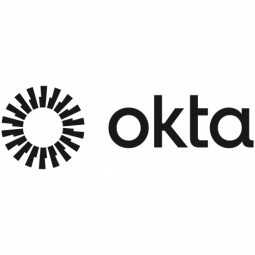
|
Enhancing User Experience and Security: Welocalize's Journey with Okta Single Sign-On
Welocalize, a global translation and localization company, was facing a significant challenge in managing its client portal. The company supports and manages the globalization programs of numerous leading brands, providing a range of services including localization, digital marketing, patent translation, and AI-enabled services. This vast array of services led to a complex web of multiple users, logins, and entry points, which was not sustainable. The company's client portal housed several workstreams serving multiple stakeholders within one organization, containing sensitive and confidential data that needed stringent protection from both internal and external security breaches. The main targets of cybercriminals, usernames, and passwords, posed a significant threat to information security. While the portal required complex security measures, including granular security clearances for each user, Welocalize needed to avoid creating a frustrating and unnecessarily complex user experience.
|
|
|
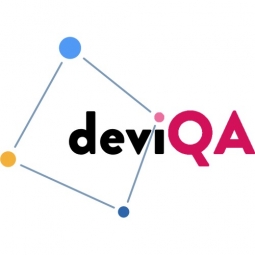
|
Revamping Test Automation for Sprinklr: A Case Study
Sprinklr, a tech platform designed to assist large brands in creating and managing social campaigns, was facing significant challenges with their testing processes. The existing test suite, developed by another company, was unstable and unreliable. Each test run resulted in a different number of randomly failed tests, making it impossible for the team to rely on the tests for release decisions. The tests were time-consuming, often taking several hours to complete. The architecture of the test suite was not scalable and was difficult to maintain for a large number of tests. Furthermore, the tests could not be integrated with other testing and DevOps tools. The challenge was to build a formal QA process, stabilize automated tests, increase their speed, redesign the architecture to support integration with third-party tools, and keep test documentation up to date.
|
|
|
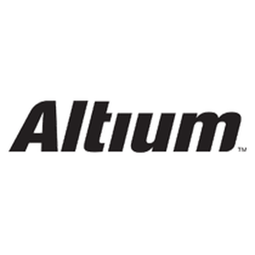
|
APTUS DesignWorks Accelerates Innovation with Altimade
APTUS DesignWorks Inc., a product development and machine design services provider based in Maryville, Tennessee, was facing challenges in accelerating project times and delivering quality service to their customers faster than their competitors. Despite their best agile practices, collaboration tools, and in-house iterative processes, they realized they needed external resources to provide them with substantial advantages in terms of price and lead time. The company was also struggling with the manufacturing approval phase and product launch, which was slower than desired. Before Altimade, they used to order the bare boards and components separately to produce a prototype, which was either assembled in-house or outsourced to a third party. Both methods required considerable time and resources.
|
|
|
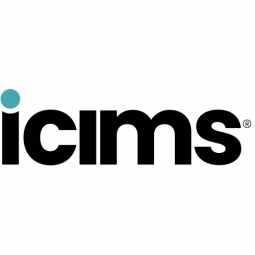
|
Digital Transformation in Talent Acquisition: A Case Study of Chalhoub Group
Chalhoub Group, a leading luxury partner across the Middle East with a network of over 750 retail stores and a workforce of over 12,000 people, was facing challenges in managing high volumes of job applications from all over the region and the world. The majority of the open positions were in stores and required a quick and seamless recruiting process. Additionally, the group was undergoing a significant digital transformation and was in need of attracting top digital and tech-savvy professionals. The existing process was time-consuming for candidates, taking them up to three minutes to find a relevant position on the company's career site.
|
|
|

|
Revitalizing Hertz: Leveraging iCIMS Data for Post-Pandemic Recovery
The global car rental giant, Hertz, faced a significant challenge when the COVID-19 pandemic led to a shutdown of the travel industry, grounding 95% of their fleet. The company had to deal with massive layoffs and bankruptcy, which necessitated a strategic and innovative approach to rebuild and recover. The primary challenge was to maintain their workforce in their corporate building, which was crucial for their success story. Additionally, they had to ensure that pay was equal across markets to keep frontline in-person roles filled. They also discovered that part-time workers were interested in more flexible scheduling, and the standard 12-hour shifts at airport locations had become an obstacle for candidates and employees with dependents at home.
|
|
|

|
Uber's Innovative Use of Employee Video Testimonials to Attract Talent
Uber, a global ride-hailing and food delivery service operating in over 10,000 cities across 72 countries, was facing a challenge in attracting a diverse range of talent. Despite making over 10,000 hires per year, the company was struggling to humanize its brand and give prospective employees a real sense of what it's like to work at Uber. The company wanted to showcase its unique culture, the incredible people making an impact, and pull back the corporate curtain. However, aside from its drivers, prospective talent did not know enough about the people who work for Uber, what they do, and the amazing opportunities that Uber provides.
|
|
|
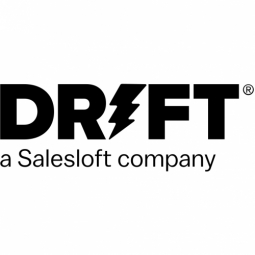
|
1Password's Transformation: Saving 16,000 Service Agent Hours in 6 Months with Drift
1Password, a data protection company, partnered with Drift in 2022 to enhance their marketing and sales meetings. However, they realized the potential to use Drift's unified platform to improve their customer support experience and make their service agents' work more efficient. The primary goal was to reduce first response times and resolution times for customer support. Previously, they had used chat, but it lacked deflection or logic, leading to a subpar experience for both website visitors and the 1Password team. They wanted to create an exceptional customer and user experience without separating their sales, marketing, and service tools.
|
|
|

|
EAB's Success Story: 120% Increase in Demo Requests with Drift AI
In 2019, EAB, a trusted partner to education institutions and corporations, acquired YouVisit, a virtual tour platform and existing Drift customer. With Drift now at their disposal, EAB saw an opportunity to experiment with chat. Initially, they used Drift only to generate demo requests, but they knew there was potential to tap into additional Drift features to scale the impact. They wanted to provide website visitors with fast, frictionless experiences. As site visitors started using the Drift chatbot for inquiries beyond YouVisit, EAB realized there was an opportunity to generate demo requests and commercial conversations for their other lines of business. However, they were hesitant about upgrading to AI due to its unfamiliar territory.
|
|
|

|
Revolutionizing Customer Experience: A Case Study on Matthews Australasia and Drift
Matthews Australasia, a leader in intelligent product identification, product inspection, and software traceability solutions, was facing a significant challenge with their outdated and inefficient customer support system. Their support chat was overburdened due to the lack of automation, requiring a team of three to constantly manage incoming customer chats and phone calls. The existing system was limited to simplistic conversations, which meant customers had to know exactly what they needed and couldn't engage in meaningful conversations. The system was also very resource-dependent and manual, offering no visibility into website activity, visitor information, or customer needs. Matthews Australasia was in dire need of a solution that could provide a better experience for both their team and their customers, and elevate their efforts to new heights.
|
|
|

|
Pantheon's 5X ROI Boost with Drift in Less Than a Year
Pantheon, a leading WebOps platform, was facing challenges in evolving its marketing strategy to keep up with its rapid growth and changing needs. The team was in search of a tool that could handle advanced marketing functions such as seamless handoffs between long-term conversations, precise audience targeting, and data integration. They were using Intercom, but it was not fulfilling all their needs. Additionally, Pantheon wanted to create more engaging automated experiences on their website to offload person-to-person interactions. They saw a great deal of potential in this approach, but they needed a solution that could help them create the self-service experiences they were aiming for.
|
|
|

|
SAP Concur's Successful Implementation of Drift for Enhanced Customer Experience and Sales Efficiency
SAP Concur, a leading brand for travel, expense, and invoice management solutions, was facing challenges with their previous chat tool. The tool was not providing the desired level of personalization and optimization. The company wanted a solution that would not only help their sales team drive new leads but also reduce the volume of support inquiries they were receiving. As a global company servicing millions of users, SAP Concur also wanted to nurture their customers at every stage of the buyer’s journey. They realized the need to design and optimize their services based on data, rather than assumptions.
|
|
|

|
Driving Digital Transformation and 61X ROI: Thales' Success with Drift
Thales, a global technology leader, was seeking a conversational solution to support all website visitors and enhance their digital engagement. The company wanted to ensure that they could qualify the visitors and understand their needs to direct them to the right person. Thales had previously used live chat via Olark, but they needed a more scalable solution that offered superior analytics, personalization, routing, and alignment with their strategy. The challenge was to find a solution that could capture leads, route conversations to the right regional and product-focused sales team members, and provide insights to help digitally transform the business.
|
|
|
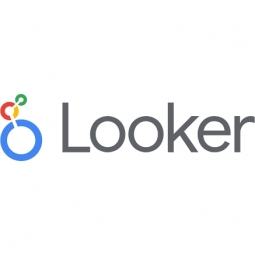
|
Auteco Mobility's Transformation through Google Cloud's IoT Solutions
Auteco Mobility, a leading sustainable-mobility company in Colombia, was facing challenges in optimizing data usage to improve decision-making and spend its time more strategically on portfolio, analytical, and operational processes. The company was struggling with scattered databases, which often took weeks to retrieve data from. This was a significant hindrance to the company's ability to make timely and informed decisions. Additionally, the company was also facing difficulties in tracking its users' experiences, which was crucial for improving its services and products. The company needed a solution that could streamline its data analytics processes, improve user experience tracking, and automate its processes.
|
|
|
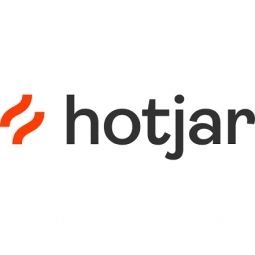
|
Spotahome's Innovative Use of Hotjar for User Experience Improvement
Spotahome, an online platform for mid- to long-term rentals, was facing a challenge in understanding their users and website visitors. The Customer Knowledge Manager, Sara Parcero-Leites, was tasked with ensuring the site was running smoothly and identifying opportunities for improvement. However, the team was not utilizing Hotjar, a behavior analytics tool, to its full potential. The tool was only being used superficially, with a few people looking at some recordings and heatmaps, but not conducting a lot of analysis. This lack of deep analysis was a missed opportunity for Spotahome to gain valuable insights about their users' behavior and improve their platform accordingly.
|
|
|

|
Arek Oy: Leveraging Google Cloud to Modernize Finnish Pension Management
Arek Oy, a Finnish company that builds and maintains information systems for pension insurance, was looking to modernize its infrastructure to improve efficiency and agility. The company wanted to adopt a hybrid approach, using a combination of private and public clouds, while ensuring data protection at all times. Arek was particularly interested in boosting capacity for its core applications that manage pension calculations and provide real-time results. However, the company faced challenges in scaling cost-effectively and quickly to support more users, which slowed its time to market for introducing customer services. Additionally, Arek aimed to eliminate outdated networks that could slow response times by as much as 30 seconds and reduce IT complexity to accelerate response times and gain better control over CPU use.
|
|
|

|
Atom Bank: Leveraging Google Cloud to Revolutionize Digital Banking
Atom bank, the UK’s first app-based bank, was facing challenges with its existing infrastructure which was slowing growth and limiting the bank’s agility. As the bank attracted more customers and wanted to offer more products, it began to feel the need for a more robust and flexible infrastructure. Initially, due to regulatory constraints, Atom bank had partnered with a third-party to host its infrastructure in an on-premises data center. However, as regulations evolved to accommodate cloud computing, Atom bank began searching for an alternative infrastructure. The bank needed a solution that would ensure speed and reliability even as it gained more customers and added more services. It also needed to be cost-effective and agile, allowing the bank to start new projects or launch new environments without having to invest in new hardware every time.
|
|




